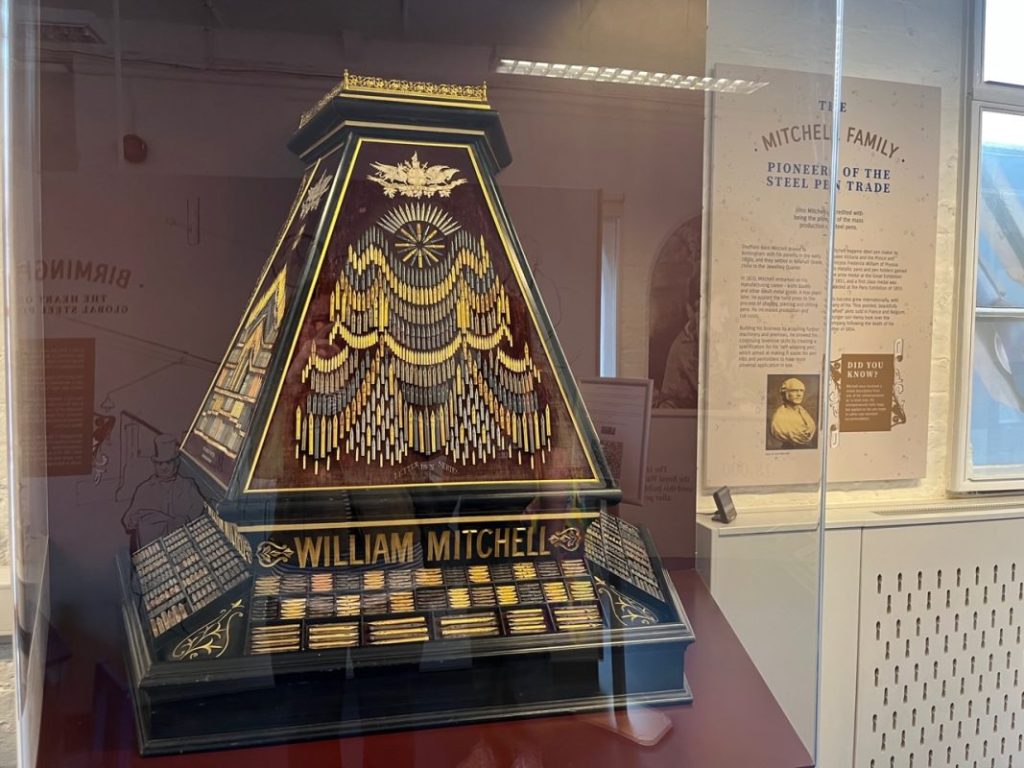A calligrapher’s guide to The Pen Museum
So many nibs, so little time!
I managed to squeeze in a quick visit to The Pen Museum on a recent trip to Birmingham – something that’s been on my to-do list for quite a long time.
The museum is housed in a former gold pen factory in the city’s famous Jewellery Quarter and is run by a team of dedicated volunteers.
It tells the story of the pen making industry and how Birmingham came to be responsible for the production of a whopping 75 per cent of the world’s pens during the 19th century.



The history of pen making in Brum
The Pen Museum is spread across three rooms, with the first introducing the history of the steel pen trade and entrepreneurs such as John and William Mitchell, Joseph Gillott and Josiah Mason.
The first room also houses three impressive nib displays from the Victorian era that would have been shown at international exhibitions and trade events.
They are the William Mitchell Pyramid, Joseph Gillott’s Rose and the Hinks, Wells & Co Star.
There’s also a self-led calligraphy station, where you can try different nibs and get inky!



The second room is named in honour of Brian Jones, a founding member of The Pen Museum.
It houses the authentic presses that were used to make the steel nibs, along with Victorian cabinets holding nibs, bottles, inkwells, blotters and other paraphernalia.
The original Victorian tiles remain on the workshop floor.



A volunteer room guide was on hand to take us through the 14-stage process of making a nib – and the danger involved in such a delicate task.
Women made up 75 per cent of the workforce and their work was monotonous, operating hand or foot presses or turning lathes for hours on end.
Each worker was expected to make around 14,000 nibs every day.
Unfortunately I didn’t get to make one myself on this occasion, but I was gifted The Aviator Pen, which never took off (if you pardon the pun) as it commemorated the first flight across the English channel – by a Frenchman.
The Pen Museum highlights
The third room, dedicated to the late Philip Poole, who owned the famous His Nibs pen shop in Drury Lane, London, features curios and novelties.
You can also try your hand at graphology or take the typewriter challenge here.
I think my favourite item among the curios was a collection of modern French pierced commemorative pen nibs, one of which featured the late Queen Elizabeth II to mark her Diamond Jubilee in 2012.
There were also some decorative pen holders fitted with a Stanhope – a small magnifying viewer showing a microfilm picture, dating back to the early 1860s.
For more information about The Pen Museum, visit the website here.
